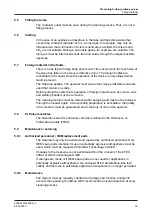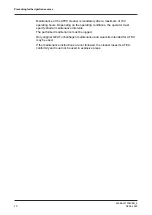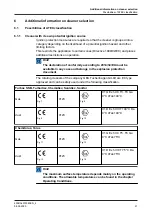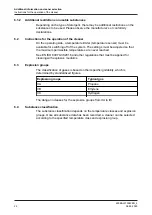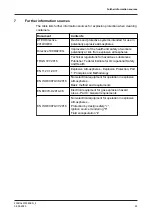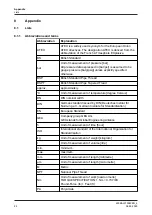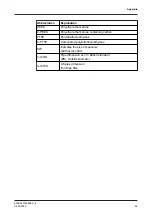
4
Cleaning
4.1
The cleaning of the tanks in explosive atmospheres
4.1.1
Basics
When cleaning containers, especially when blasting and spraying liquids, high
and dangerous electrostatic charges may occur, resulting in spark discharge
processes.
Impacting cleaning jets form droplets or mists during dicing that may be charged
and then generate electrical charges in the container. Existing turbulences
distribute the charged mist throughout the container and thus can create high
space charge density with high field strengths.
At the same time, the cleaning liquid itself or the medium in the tank can be
combustible and thus form an explosive atmosphere.
Thus, the three basic conditions for explosions with dangerous effects are
created:
•
Flammable gas / flammable dust
•
Effective ignition sources
•
Acid.
4.1.2
Guidelines
If there is a risk of explosion with dangerous effects, the following guidelines must
be applied in all EU countries, among others: see table "Guidelines to be
applied".
Applicable guidelines
Manufacturer responsibility
Operator responsibility
Directive 2014/34/EU.
Directive 1999/92/EG.
Explanation of ATEX conformity for a
product or declaration that the product
has no potential sources of ignition
Preparation of the explosion protection
document for an installation:
ATEX conformity includes:
Determination of the category and
additional limits of use
This includes:
Definition of the explosion zones and
the additional plant conditions
Category 1 *) ==>
Category 2 *) ==>
Category 3 *) ==>
For Zone 0 *)
For Zone 1 *)
For Zone 2 *)
*) Particular limitations must always be considered, e.g. Temperature classes.
In addition, the regulations of the local supervisory authority apply.
Outside the EU, separate and divergent regulations apply to protect against
explosions and their damaging effects, e.g. in the US, the NEC National Electric
Code set of rules along with the UL standards. These regulations must be applied
in these countries. Some of them require their own approval procedures.
Cleaning
The cleaning of the tanks in explosive atmospheres
430BAL013060EN_4
16
08.09.2020


















